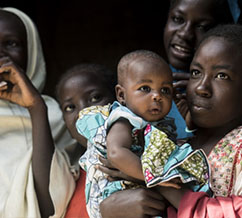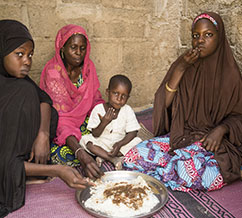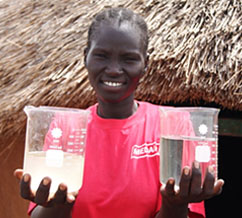Today the United States announced more than $169 million in humanitarian assistance to support those in Ethiopia and Kenya who are experiencing the effects of prolonged severe drought. This additional funding, including nearly $137 million in Ethiopia and nearly $33 million in Kenya, brings the total U.S. humanitarian contribution in Ethiopia and Kenya to more than $458 million in Fiscal Year 2017.
As of July 26, health agencies had recorded more than 408,000 suspected cholera cases and 1,885 associated deaths in Yemen, according to the UN World Health Organization (WHO). UN agencies, in coordination with humanitarian partners, have scaled up cholera response efforts to address widespread health and water, sanitation, and hygiene (WASH) needs throughout cholera-affected areas.
Armed attacks in Nigeria and Chad result in civilian casualties and hinder humanitarian access. USAID partners continue providing life-saving health, food, and WASH support across northeastern Nigeria, where more than 13,100 people have spontaneously returned from Cameroon since April. Flooding in Niger results in more than 20 deaths and affects nearly 19,500 people.
Global donors continue to be confronted this year with major humanitarian crises around the world, which demand an immediate, substantial, and collaborative response. The USAID-funded Famine Early Warning Systems Network, or FEWS NET, warned early on that 2017 would see an unprecedented 81 million people across 45 countries in need of emergency food assistance, largely due to persistent conflict, severe drought and economic instability. South Sudan experienced famine earlier this year and three other countries—Somalia, Nigeria and Yemen—face the threat of famine, putting a combined 20 million people at risk of severe hunger or starvation. In terms of scale, more than twice the populations of New York City and Washington, D.C. combined are at risk. Over the past year, I have traveled to some of these countries and others facing severe food insecurity to see firsthand the situation on the ground. Today I want to share with you more about the ongoing crises in these countries, what we and others in the international community are doing to respond, and the challenges these countries face.
The Global Food Security Act sent a clear message that the United States is committed to addressing the root causes of poverty and hunger by equipping people with the tools to feed themselves. Feed the Future, guided by the Global Food Security Strategy, is leveraging investment from partner countries and the private sector to reduce reliance on humanitarian aid, promote American prosperity, deliver results, and build stability around the world. What began as the U.S. Government response to the 2008 global food crisis under President George W. Bush, led to a mobilized commitment and investment from other donors and countries in targeted, long-term food security solutions. These efforts continue today in many of the world’s most vulnerable countries, including those faced with the specter of famine and insecurity.











Comment
Make a general inquiry or suggest an improvement.